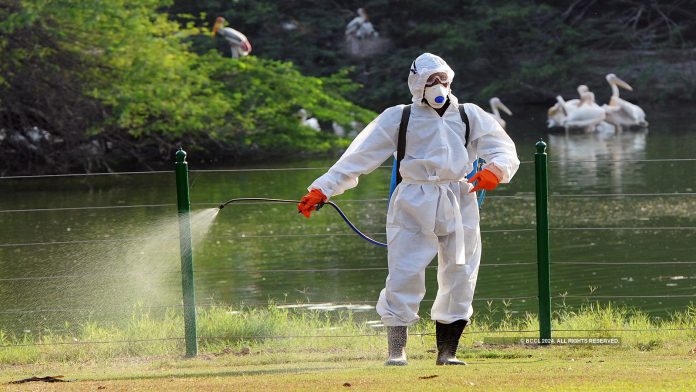The H5N1 bird flu virus has been spreading more aggressively among wild birds and marine mammals since arriving in South America in 2022, raising the risk of becoming a more serious threat to humans, Reuters reports.
It’s pretty hard to explain some of these large infections and die off without having mammal-to-mammal spread.
Scientists are concerned that the disease, once largely confined to bird species, now appears to be spreading among mammals. The strain has already killed several dolphins in Chile and Peru, about 50,000 seals and sea lions along the coast, and at least half a million birds across the region.
The strain has been detected in dozens of bird species, including some migratory species that could spread it beyond the region. As climate change escalates, animals will be forced to move into new areas, mixing with each other in new ways and possibly increasing opportunities for further virus mutation. Alonzo Alfaro-Nunez, a viral ecologist at the University of Copenhagen, stated:
It’s a matter of time before you will detect the first South American strain in North America.
Growing concern has prompted the 35 countries of the Pan American Health Organisation (PAHO) to convene regional experts and health officials to meet this week in Rio de Janeiro. The group planned to establish the world’s first regional commission to oversee bird flu monitoring and response, PAHO officials announced.
Since the virus was first detected in Colombia in October 2022, two human cases were reported on the continent, one each in Ecuador and Chile. Both came from contact with infected birds. The two patients have survived, but experts warn that H5N1 is fatal to humans in about 60 per cent of cases worldwide.
Medicine producers, including GSK and Moderna, stated that they were developing bird flu vaccines for humans and had the capacity to produce hundreds of millions of vaccine doses within months, using production lines commonly employed for seasonal flu vaccines. Ralph Vanstreels, a University of California, Davis researcher studying South American variants of H5N1, noted:
We’re seeing [the virus] doing little evolutionary steps that are on the long-term moving towards a potential human infection.
In a draft paper published on the website of the US Centres for Disease Control and Prevention, scientists analysed samples of sea lions, seals and birds from the coast of the Valdes Peninsula. By comparing the genomes of these samples to ones collected in North America in 2022 and in Asia earlier, the team identified nine new mutations.
The same mutations were found in samples collected in 2022 and 2023 in Chile and Peru, which were also affected by massive sea lion and bird mortality. Vanstreels added:
This is the first time this virus is so adapted to wildlife. Clearly something happened in Peru and in northern Chile where they acquired these new mutations.
The researchers noted that the same mutations were present in one of two people on the continent, a 53-year-old man who lived one neighbourhood away from the seashore where the seabirds gathered. The scientists stated that the case “highlights the potential threat posed by these viruses to public health.”
With health officials and experts meeting in Rio this week, Latin American countries will be forced to step up surveillance of diseases in the wild. Furthermore, a new regional commission, expected to be announced on Thursday, will seek to establish standardised protocols for monitoring, case management and reporting among various government agencies.
